4 Reasons Your Starter Spins But Does Not Engage (How to Troubleshoot)
We expect our cars to start with a turn of the key, but sometimes the engine fails to start, leaving us frustrated and late. A perplexing “no start” issue is when the starter spins yet doesn’t engage the flywheel.
No car brand is immune to this problem, but careful diagnosis and attention to detail can solve it. Let’s look at the most common causes of a starter that spins but doesn’t engage.
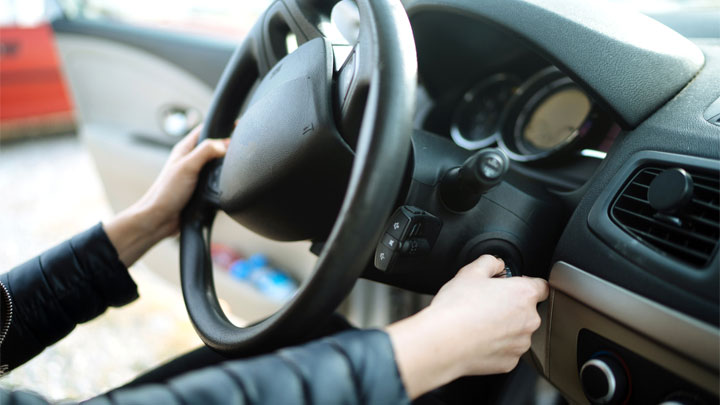
See Also: 3 Causes of a Car That’s Hard to Start When Cold
How Does a Starter Motor Work?
Though not overly complicated by design, a vehicle’s starter is designed to accomplish a number of tasks simultaneously. Upon turning a vehicle’s ignition, power is distributed to the starter, as well as the starter solenoid.
Within the starter, an electromagnet is energized. Once energized, this electromagnet drives a specialized shaft outward, to which a precision cut pinion gear is attached. This pinion gear meshes with the geared outer segment of a vehicle’s flywheel, known simply as the ring gear.
Upon engagement, the power delivered to the starter causes the motor within to turn, also turning a vehicle’s flywheel in the process. The flywheel, or flexplate, which is affixed to the engine’s crankshaft, then initiates engine rotation.
Once spinning, timing-sensitive engine functions are enabled, such as spark delivery and valve actuation. An engine’s pistons are also cycled within their respective cylinders, as a result of the above-mentioned crankshaft rotation.
A vehicle’s engine will roar to life almost instantaneously if each step of the process described above goes off without a hitch. However, if any part of this process goes awry, one will typically find themselves calling for a tow.
Causes of a Starter That Spins But Doesn’t Engage
A lack of starter engagement, even in the presence of drive motor function, can be caused by a host of underlying issues. Recognizing these potential causes can assist one in expediting their vehicle’s repair, and eventual return to the road.
The following are several of the most common causes of a starter that spins but doesn’t engage.
#1 – Low Battery Voltage
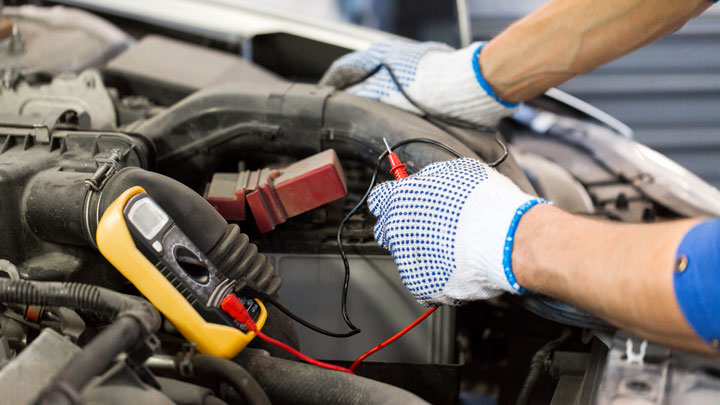
It takes a substantial amount of power to energize and drive a starter motor’s Bendix assembly.
In many cases, a faltering battery will have just enough juice to spin the starter motor itself, but not enough to allow for Bendix actuation and flywheel engagement.
Related: Does Your Car Click When Attempting to Start It? (Here’s Why)
#2 – Starter Bendix Failure
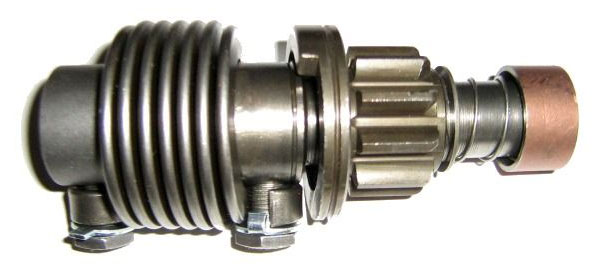
Starter engagement issues can also be caused by a starter Bendix drive that has failed. This will result in a starter that spins as it should, yet never mates with an engine’s flywheel or flexplate.
A failure of this type ultimately necessitates starter replacement.
#3 – Faulty Starter Solenoid/Stick Solenoid Contacts
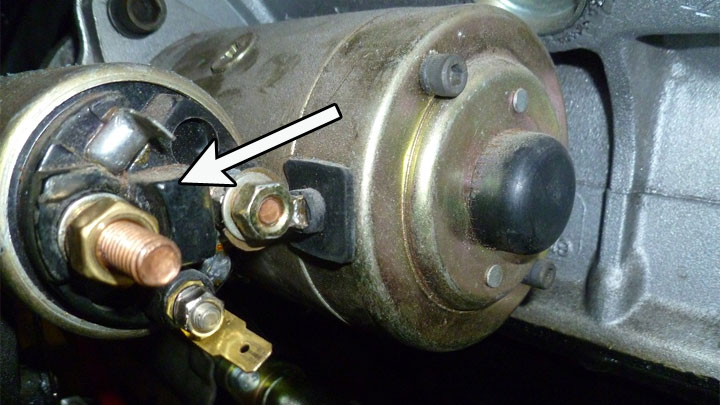
Problems related to your vehicle’s starter solenoid can also be to blame for a lack of starter engagement. The starter solenoid acts as a relay of sorts, distributing ample power for total starter operation.
If a starter solenoid is on its last leg, or its contacts are sticking, a starter’s Bendix might fail to engage the flywheel.
#4 – Corroded Or Loose Cabling
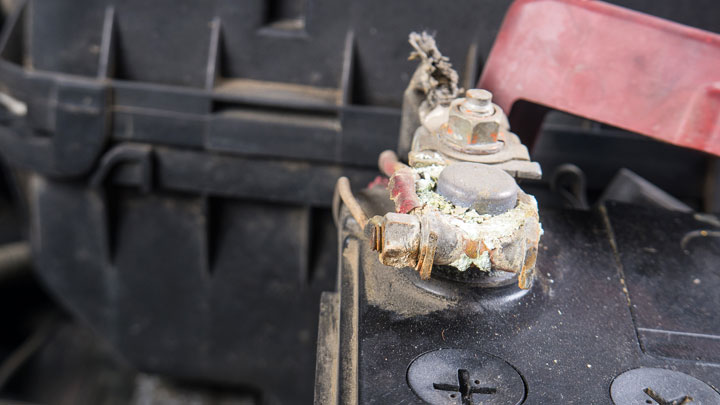
Another common cause of starter-related issues is cabling or wiring that is corroded or loose. When battery cables are loose or corroded, they are often unable to carry the necessary voltage and amperage to facilitate proper starter operation.
Such issues include an overall lack of flywheel engagement.
How to Troubleshoot (Determine the Cause)
There are several steps that can be taken to assist in uncovering the source of your starter-related woes. Following such steps will expedite the diagnostic process, allowing you to place your vehicle back in service, in record time.
The following are a few simple steps to assist you in determining the source of your vehicle’s starter engagement issues.
Step #1 – Inspect Battery Terminals/Cables
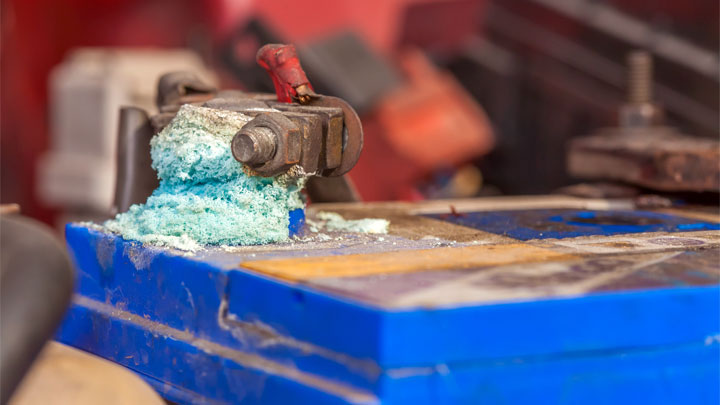
Begin the diagnostic process by popping your vehicle’s hood. Inspect the battery’s terminals for signs of corrosion or damage. Likewise, check to ensure that your battery terminal-to-lead connections are tight.
Step #2 – Test Battery Voltage

Next, you will want to test your battery’s voltage. A battery tester can be handy in such situations, though a multimeter can also be used for such testing.
While testing between your battery’s positive and negative terminals, make sure that 12.6 V is present. A reading below this voltage mark is highly indicative of a failing battery.
Step #3 – Verify Battery Cranking Potential

With the help of an assistant, you will now test your battery’s drop during cranking. Check the battery voltage in the same manner mentioned above, while having an assistant turn the vehicle’s ignition to the “start” position.
During cranking, the voltage of the battery in question should not drop below approximately 10 V. A drop below this threshold would place the affected battery in question.
Related: 4 Reasons a Vehicle Cranks But Won’t Start
Step #4 – Check Starter Connections
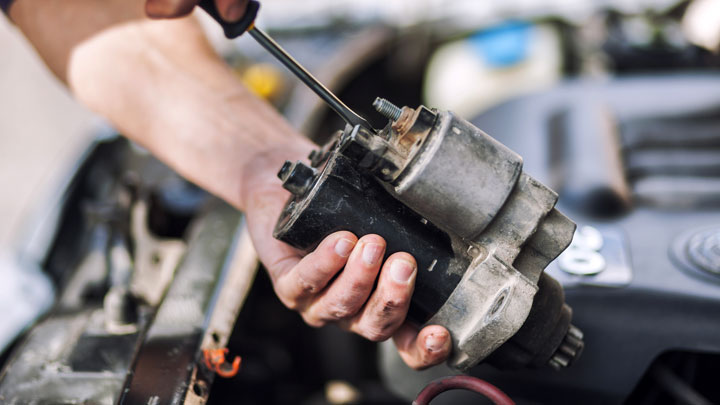
Assuming your vehicle’s battery has been tested within specification, it will now be necessary to inspect all electrical connections to your vehicle’s starter. Ensure that all connections are tight and free of corrosion.
Likewise, it is also advised to check for proper power distribution at the starter/starter solenoid, using a multimeter. Have an assistant crank your vehicle’s ignition, while verifying that your vehicle’s starter and starter solenoid are powered appropriately at each respective lug.
Step #5 – Verify Power Delivery With Jump Test
One can also double-check their prior findings by jumping their vehicle’s starting solenoid. This is accomplished by placing the blade of a screwdriver between the main positive lug of the starter and the exciter lug of the starter solenoid.
If the starter/starter solenoid is in proper working order, a vehicle’s engine should start. Otherwise, starter removal and inspection will be in order.
- Car Temperature Gauge Stopped Working? (Here’s Why) - Apr 15, 2024
- Ignition Coil vs Coil Pack (What’s the Difference?) - Apr 8, 2024
- Windshield Wipers Won’t Turn Off? (Causes and What to Do) - Apr 5, 2024

its your coil pack and icm like $65 for set on ebay
I put in a new starter and it just spins.
I read that possibly the new starter wires (the large wires) may be opposite the bold ones so I switched them. No spinning but no nothing.Then I PoP started it to go some place and after 10 minutes it started to spit and sputter then died. I don’t know what to do and its my only transportation.
Can you tell if the starter is actually cranking the engine?
ok i did all that bought a brand new battery cable starter still wont start
Have the battery and alternator both tested good?